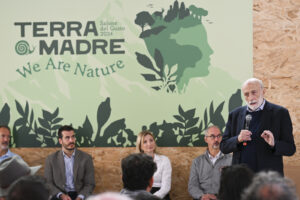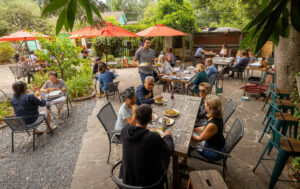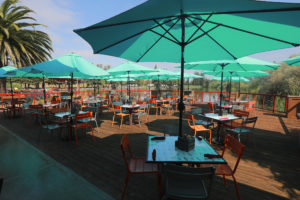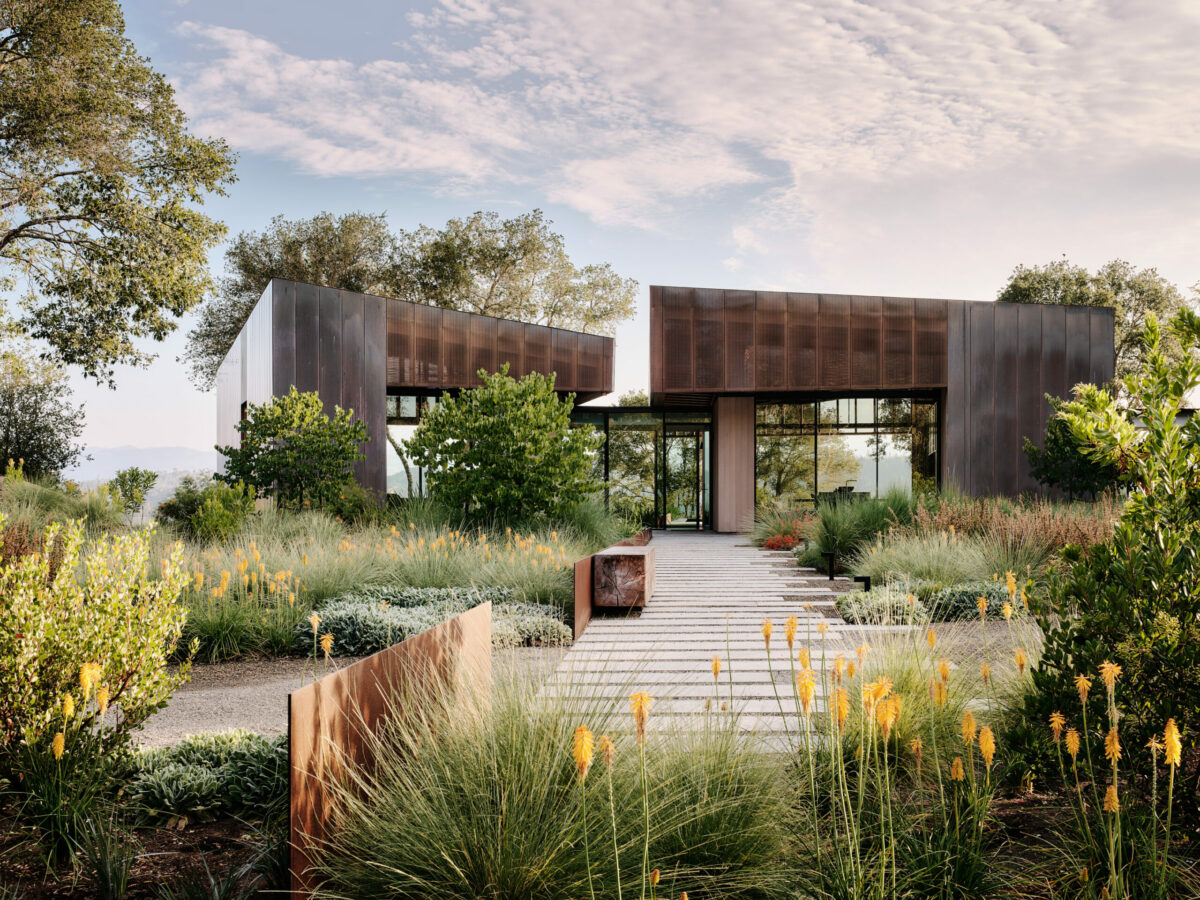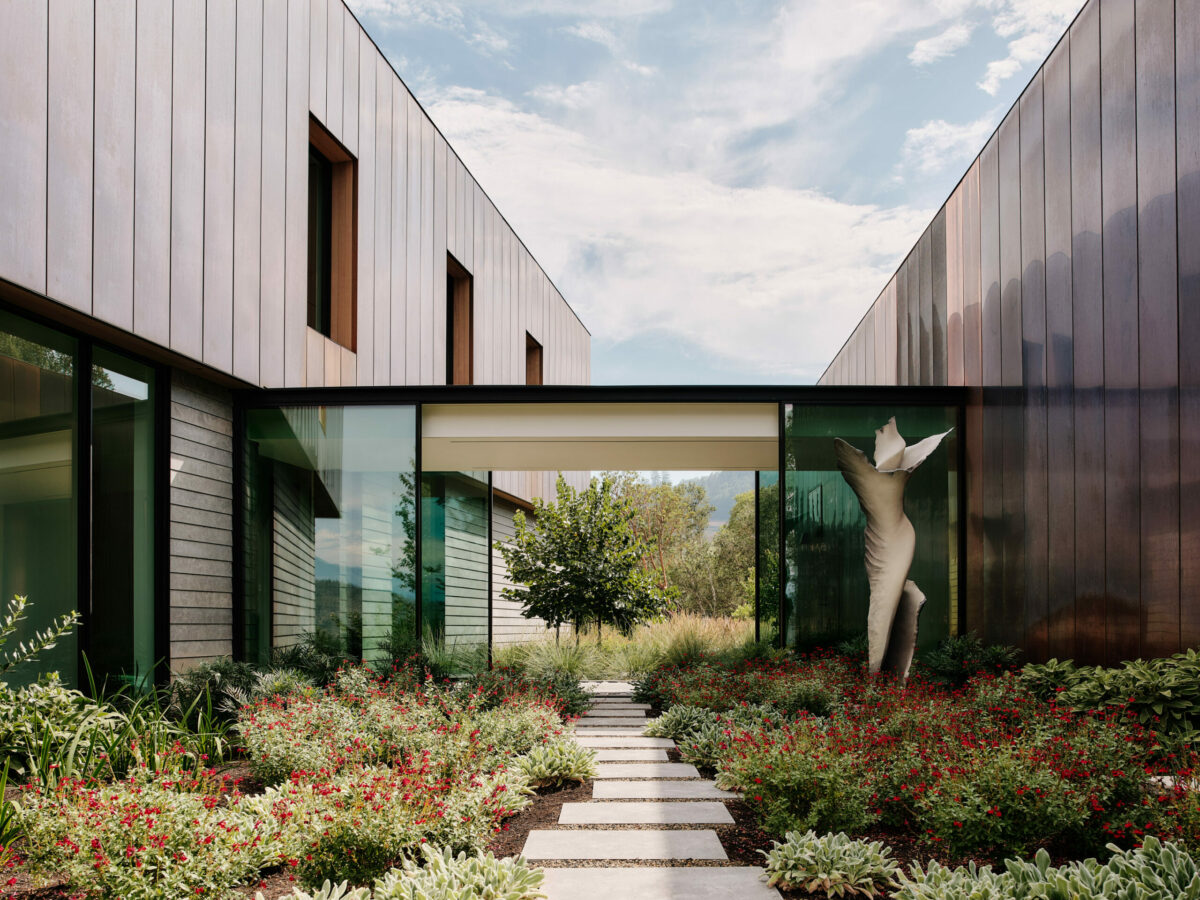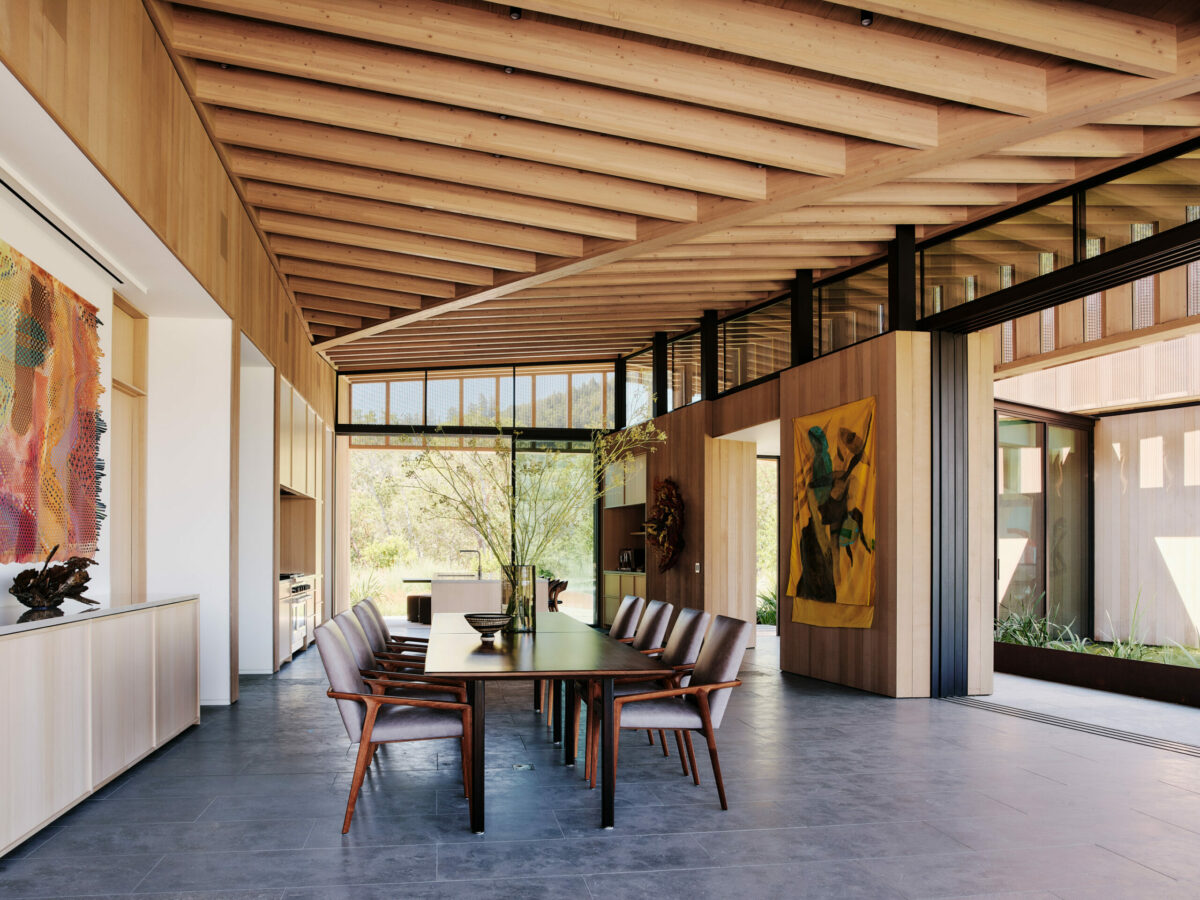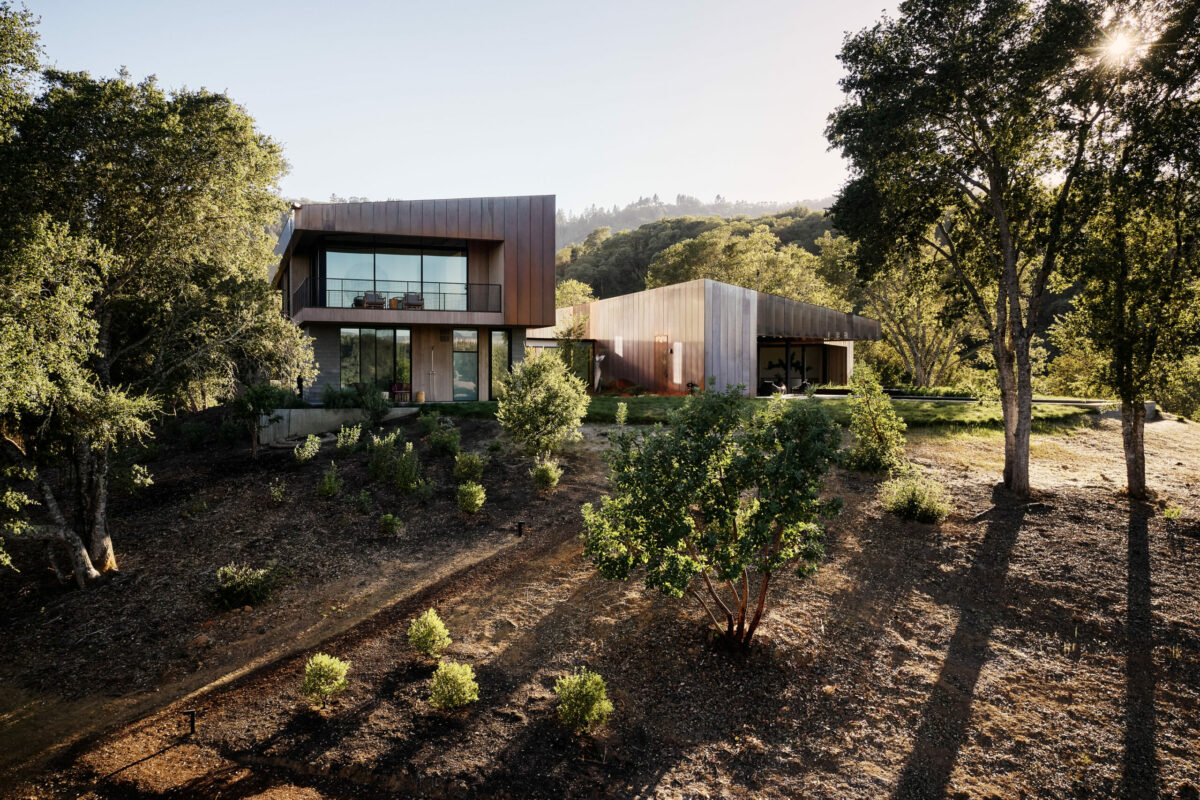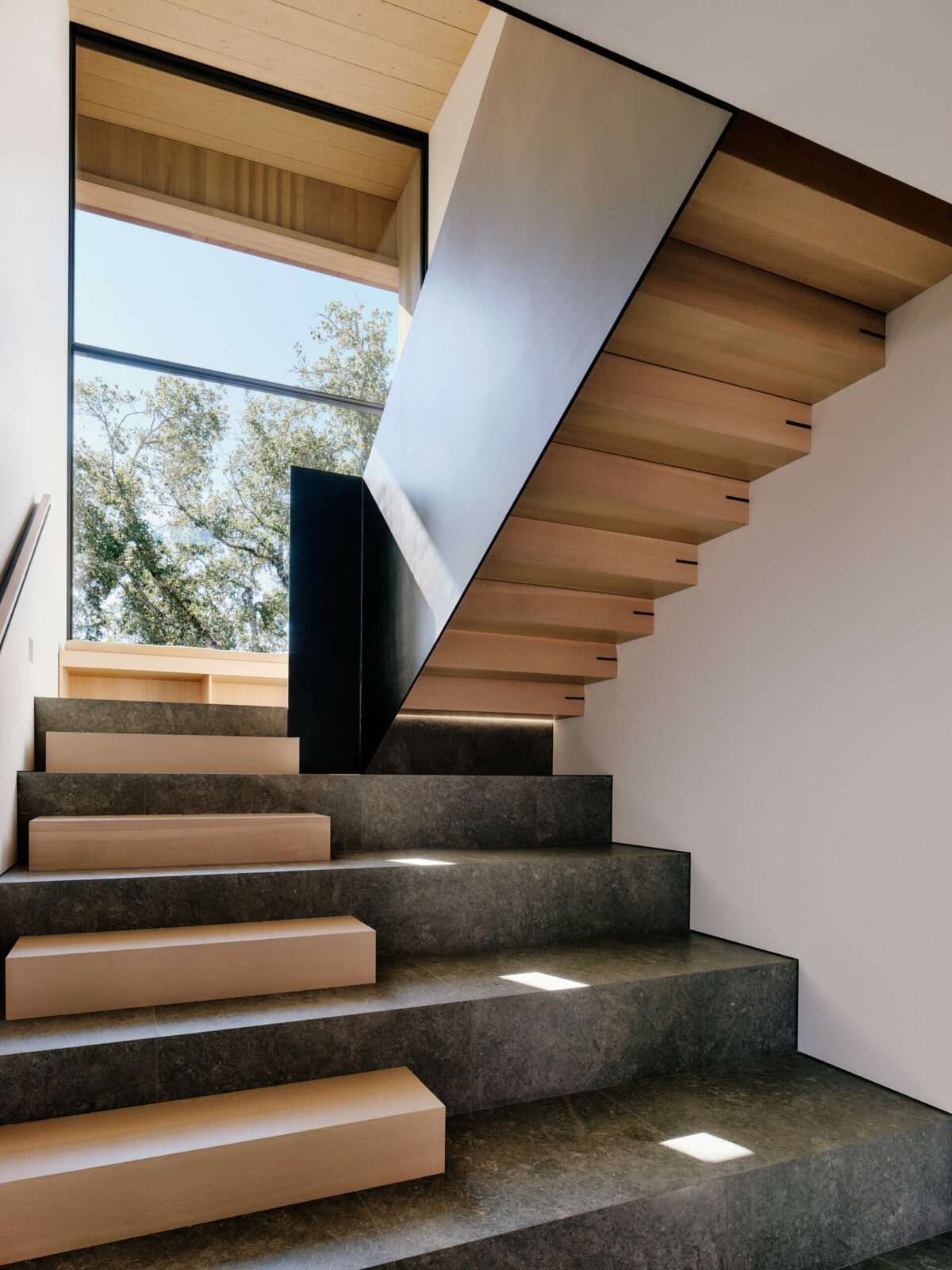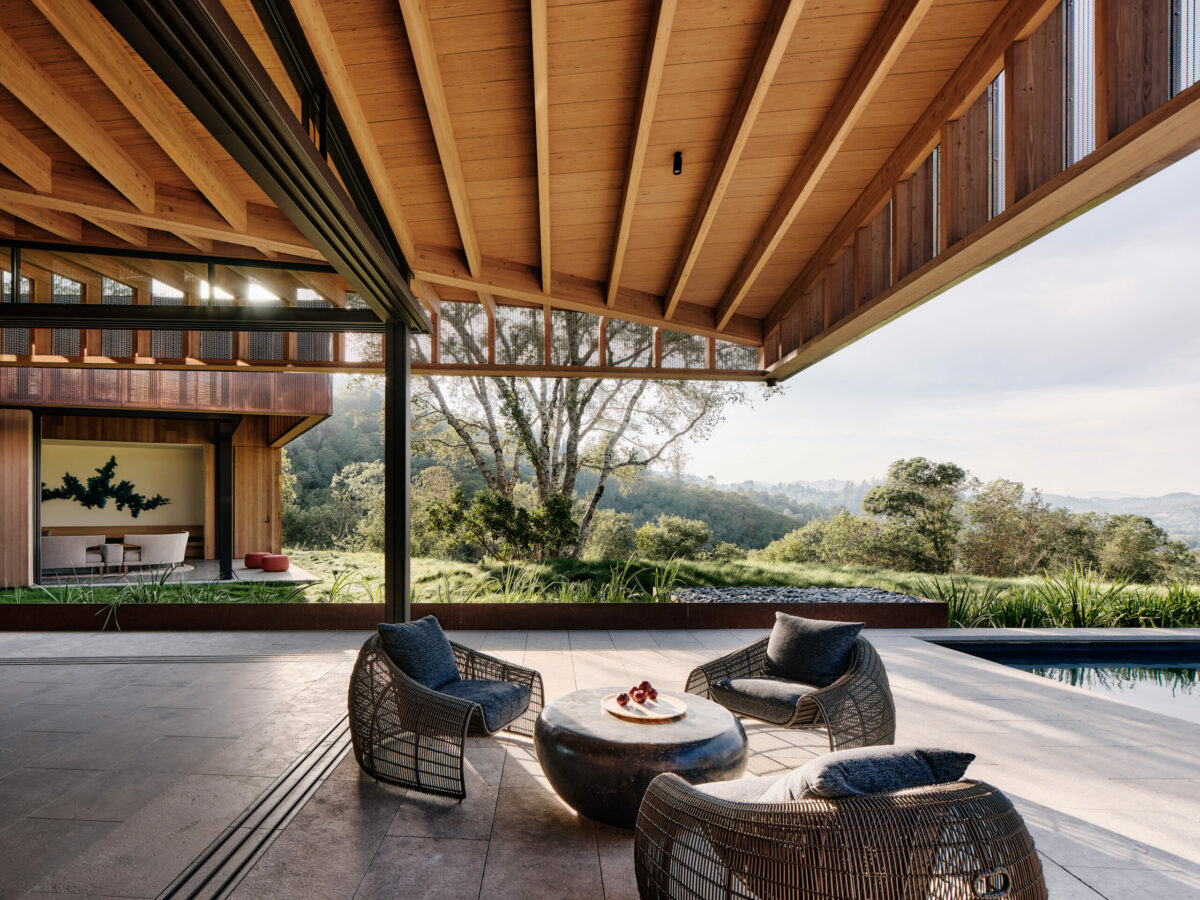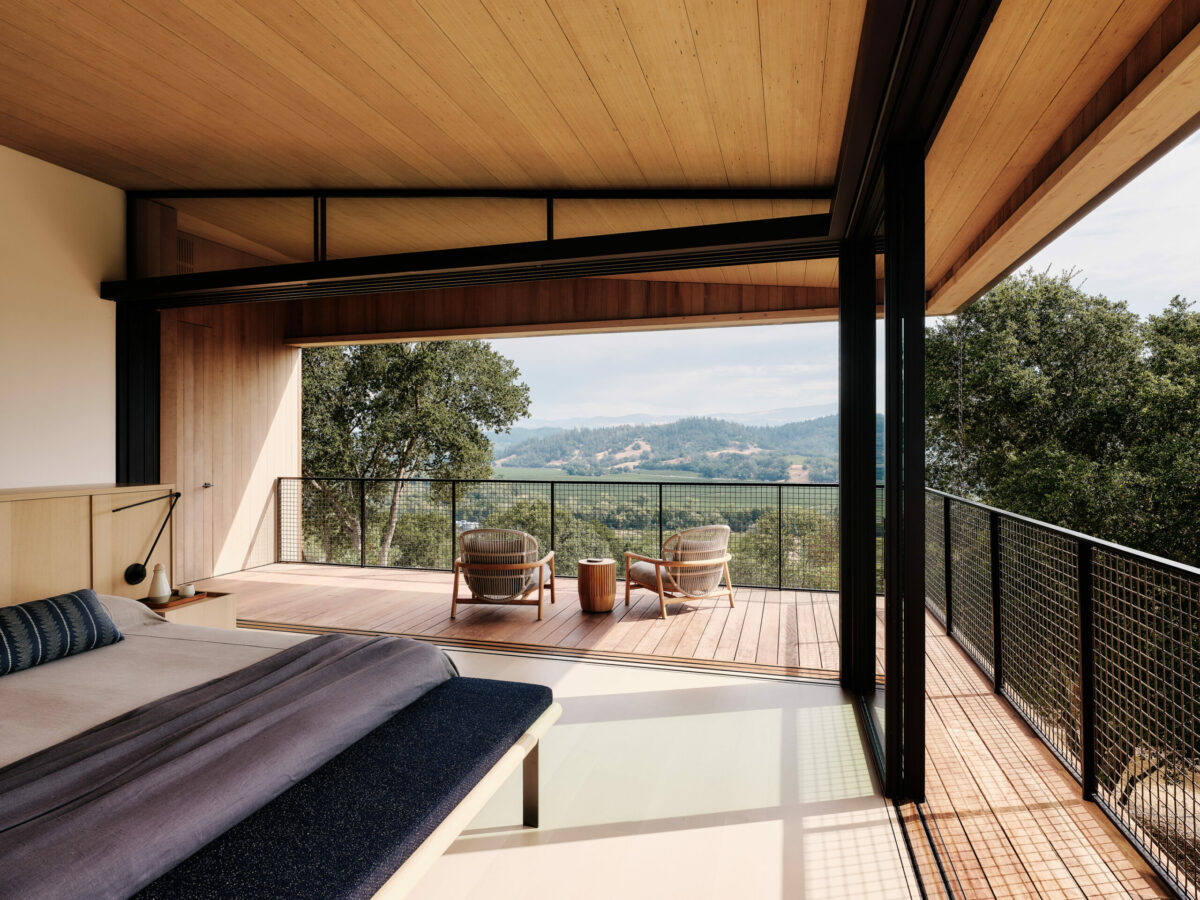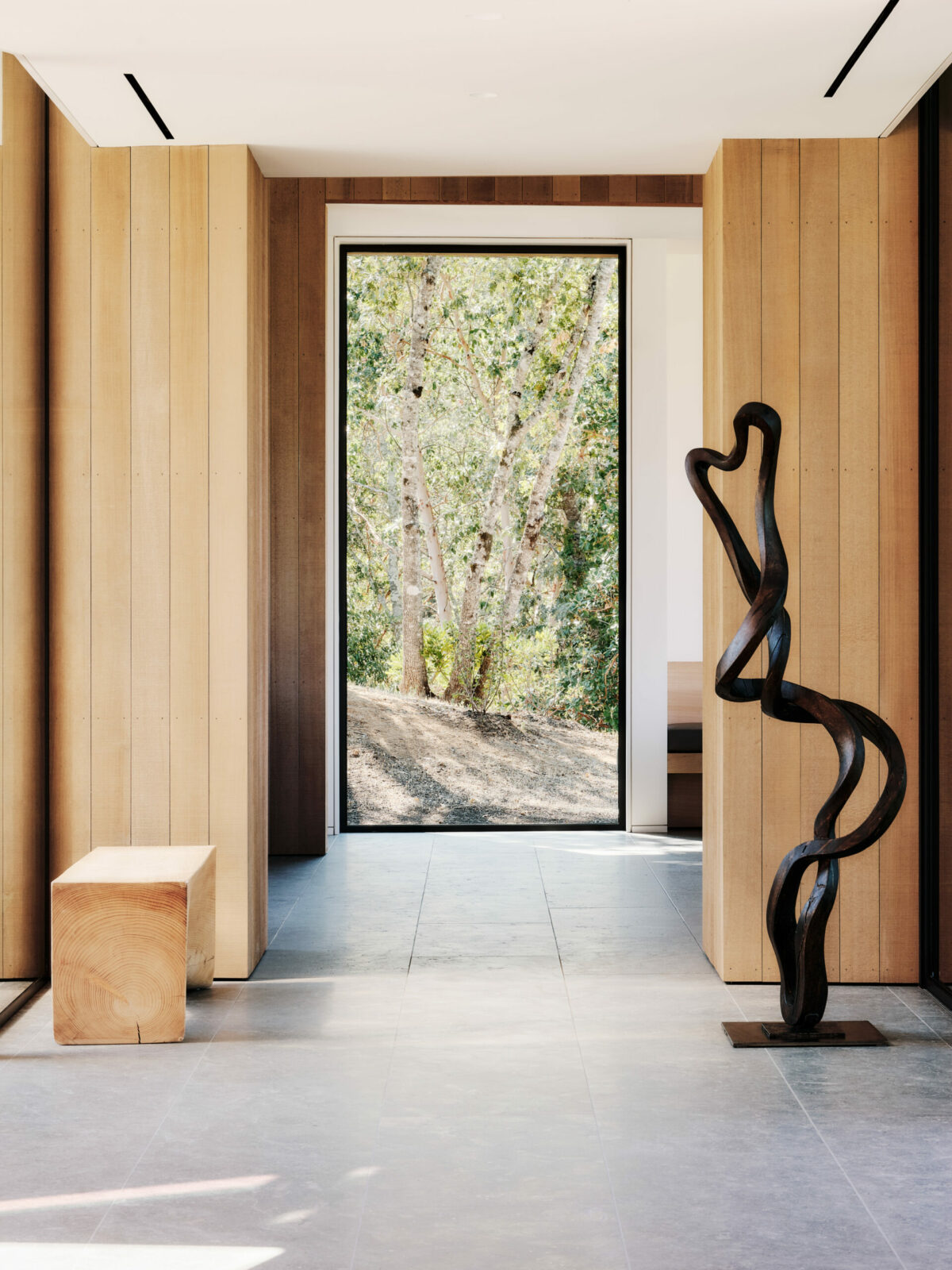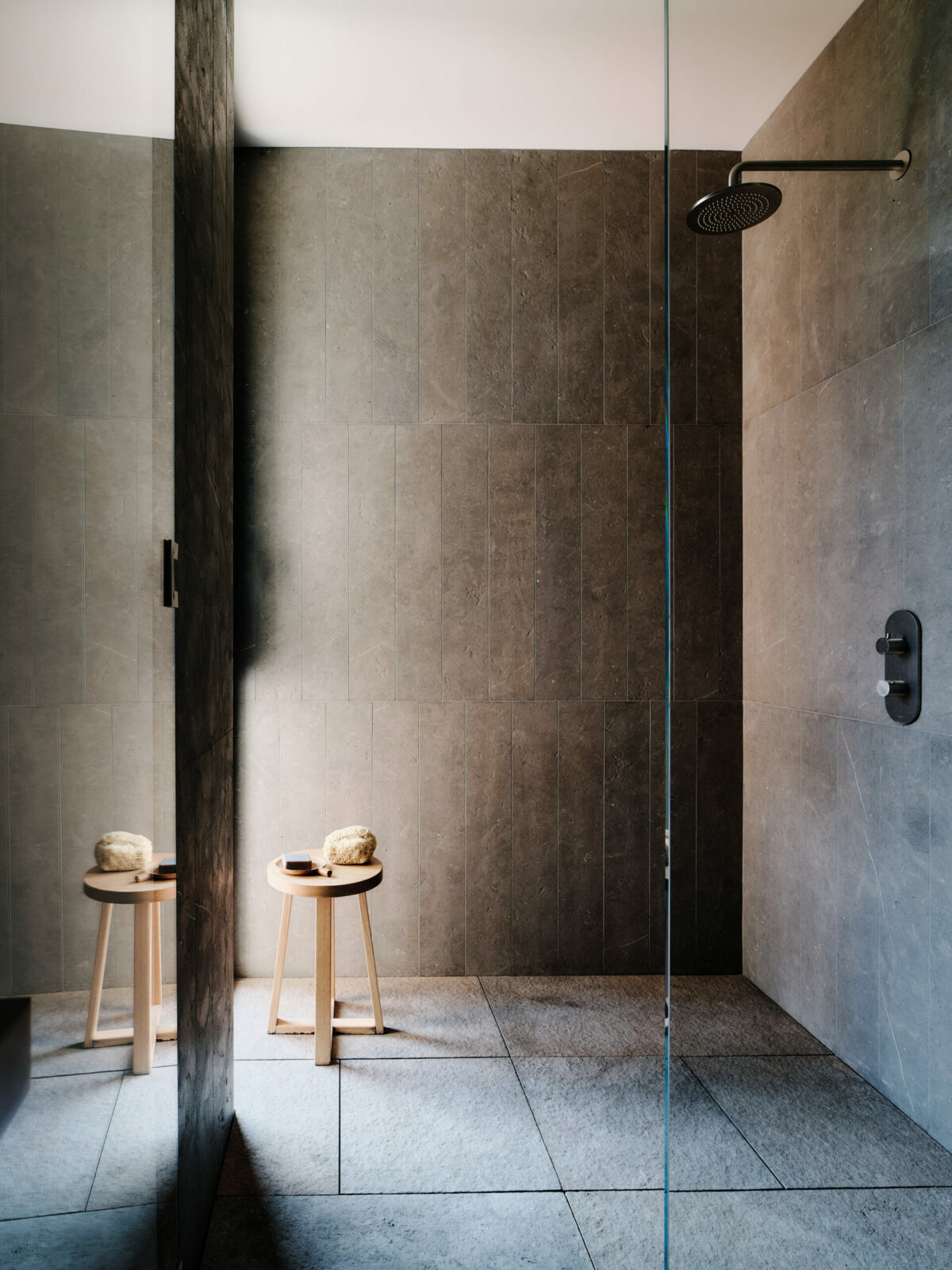On rainy days atop Sonoma Valley’s Madrone Ridge, a contemporary home designed by Field Architecture gets a large-scale water feature. Two streams of rainwater flow down from the roof — one at the front of the house, one in the back — into river rock basins. From the inside, the home’s glass walls offer views of both streams of rainwater at the same time.
“The whole house becomes this celebration of the first rain of the season,” says lead architect Jess Field.
The design — reflecting “the symbiotic relationship between water and earth” — is both practical and aesthetic. The water is released slowly from the rock basins into the ground, which, according to Field, moistens the soil at a rate slow enough to prevent run-off and erosion. The falling water also creates what Field calls an “interplay” between the structure and nature.
“Each house (we design) is a case study for how we can deepen our relationship with the world outside and our world inside,” he says.
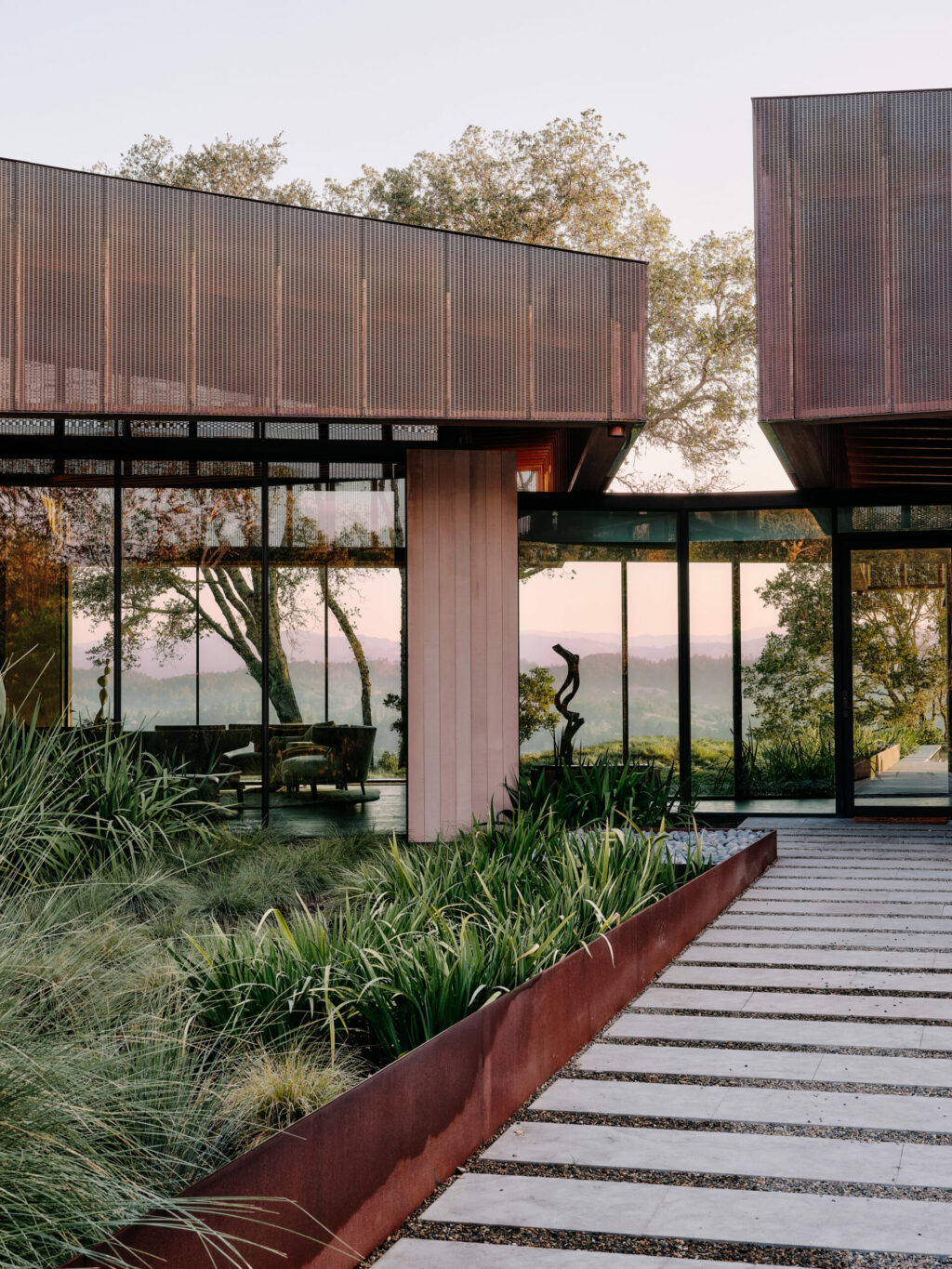
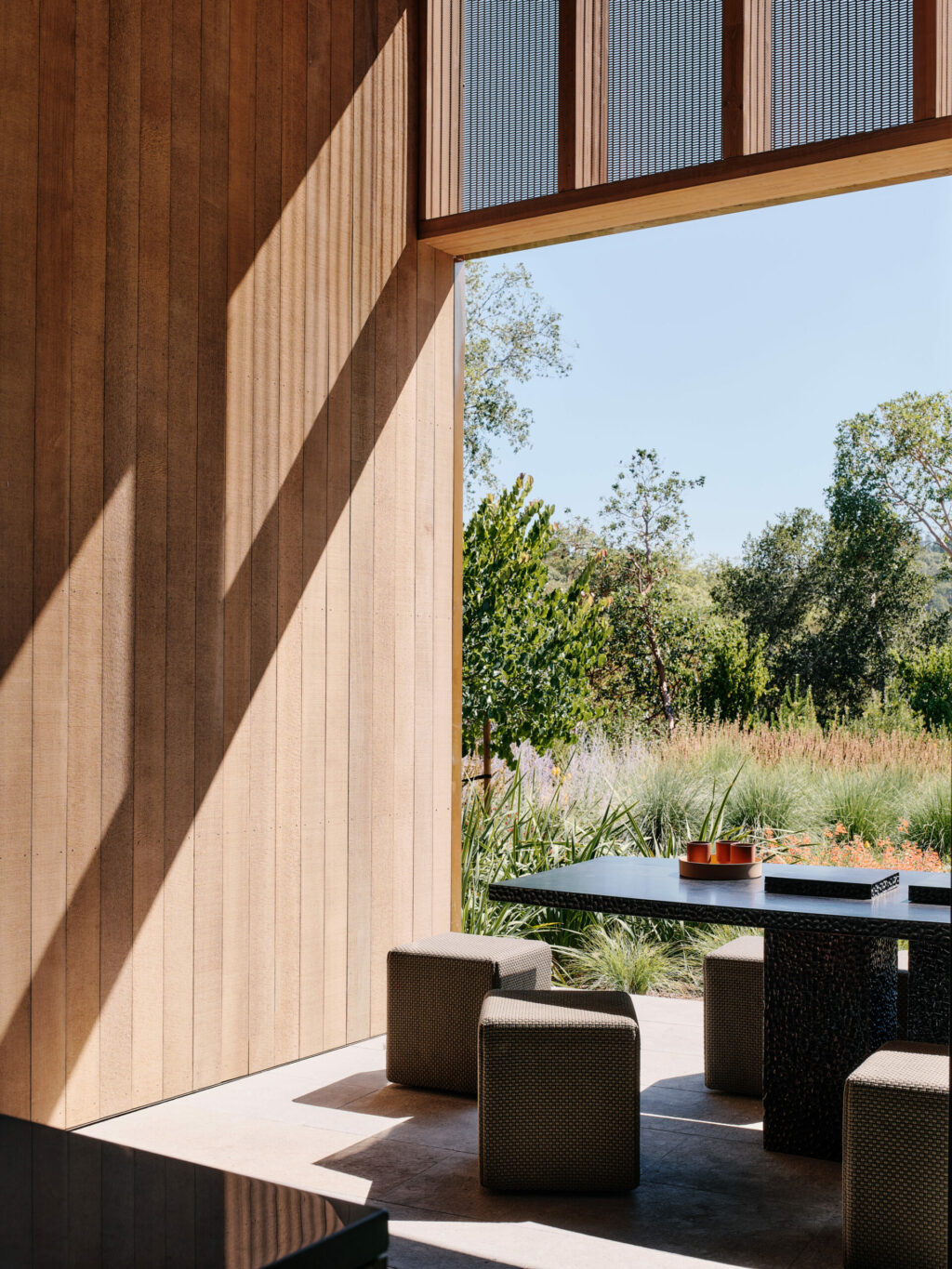
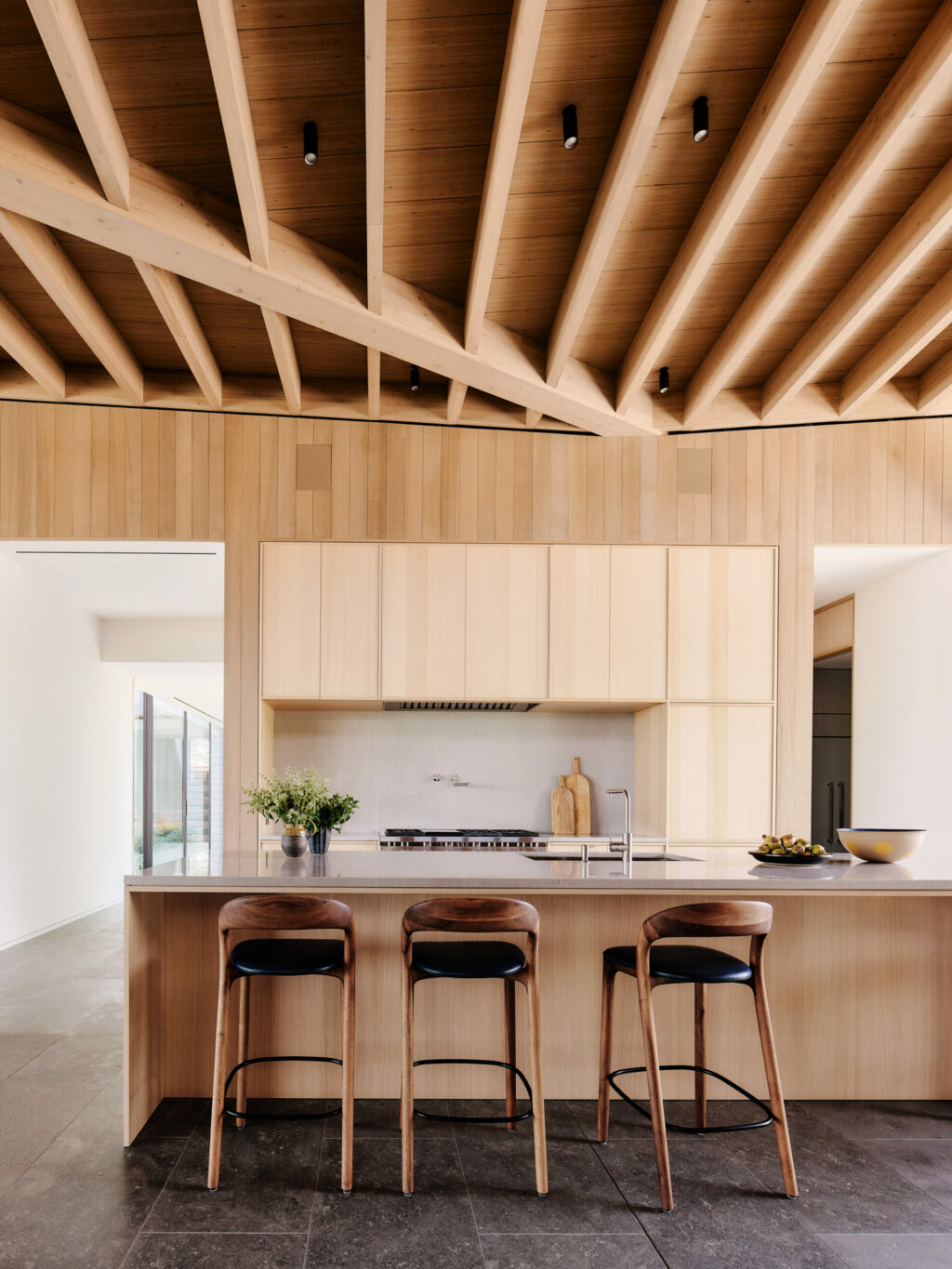
While the 4,920-square-foot Madrone Ridge home is a single geometric structure, it’s made up of three pavilions joined by transparent breezeways. Field designed it with a “glove-like” floor plan with the separate “fingers” of the home spreading out and nature filling in the gaps around the living areas.
The natural setting guides Field’s design process. His father, also an architect, inspired this approach — he designed a Johannesburg dwelling in 1972, named the Miller Home, built around the rocks on the site so that they didn’t have to be moved. “No boulders can be moved or touched by any man-made structure,” said Field’s father.
Field positioned the Madrone Ridge home in relation to the sun’s path to create “great places to trap” its movement. The breakfast nook enjoys morning sunlight as does the landing of the stone and wood stairway, where the homeowners like to have a cappuccino and the family dog likes to nap. The dining room is best place to take in the sunset.
Field brought more natural elements inside the home with the help of Pope Valley ceramist Kelly Farley, who crafted tiles with glaze mixed with iron-rich soil from the site. The result is stunning rusty-brown bathroom tile.
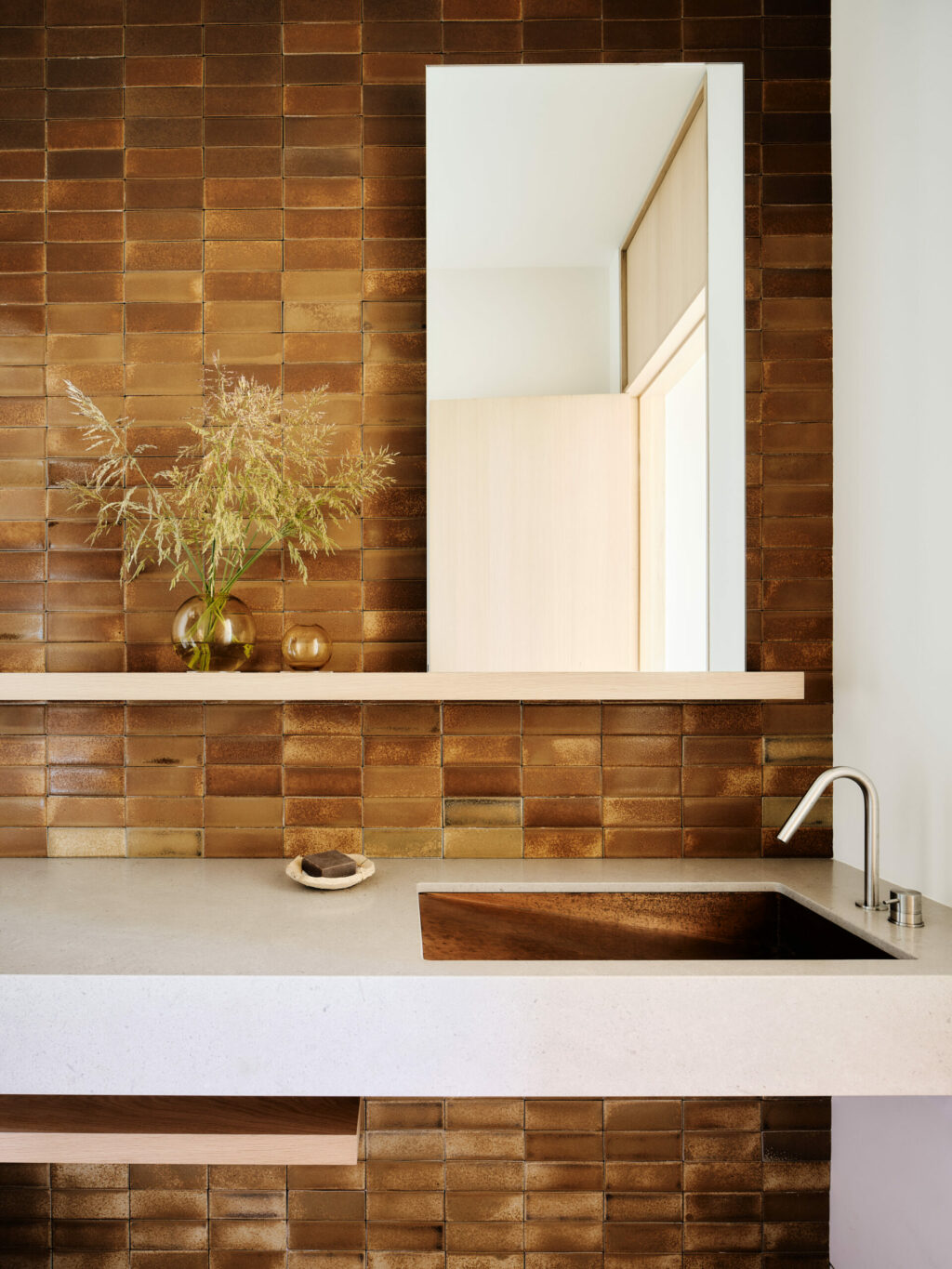
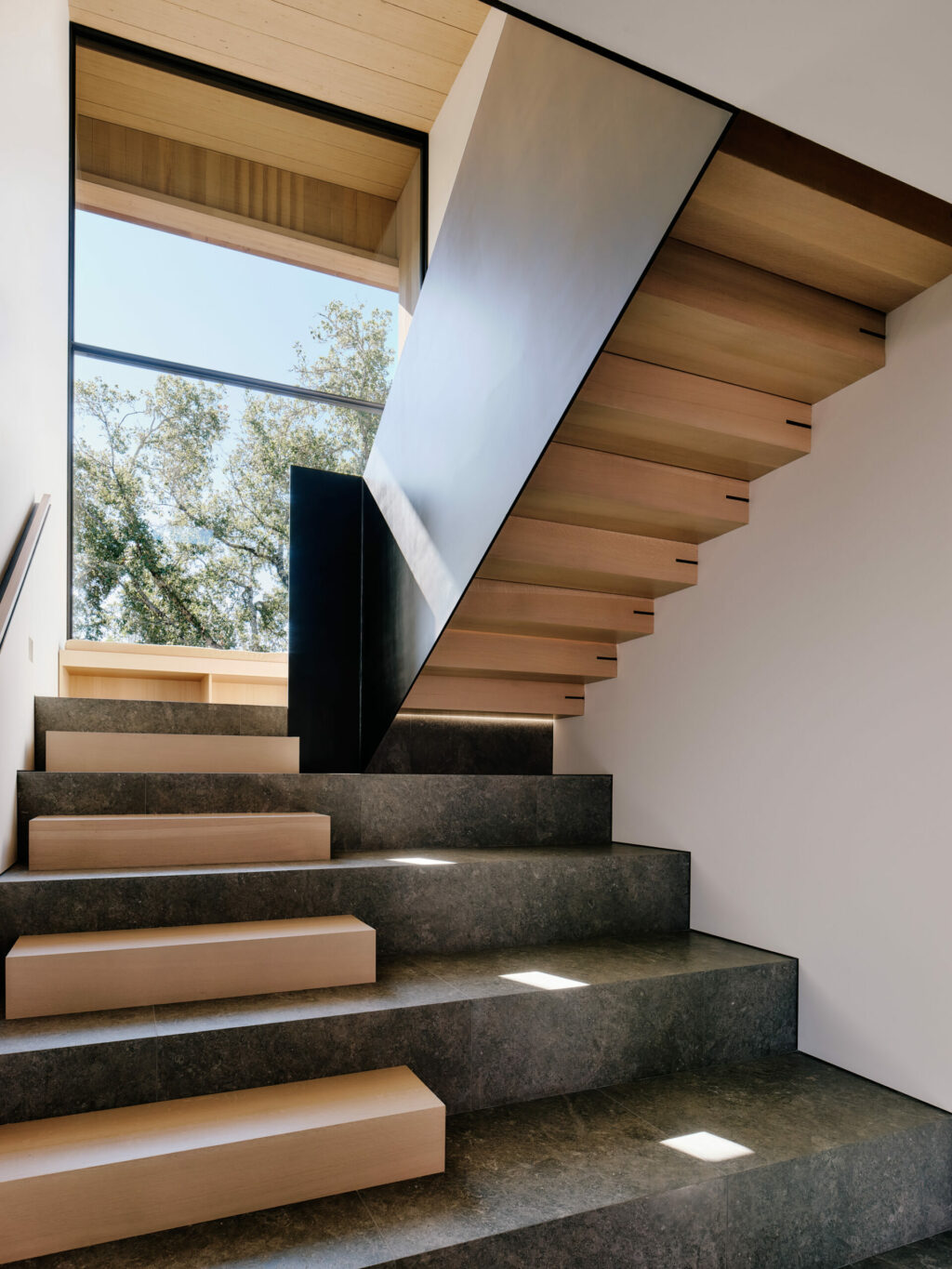
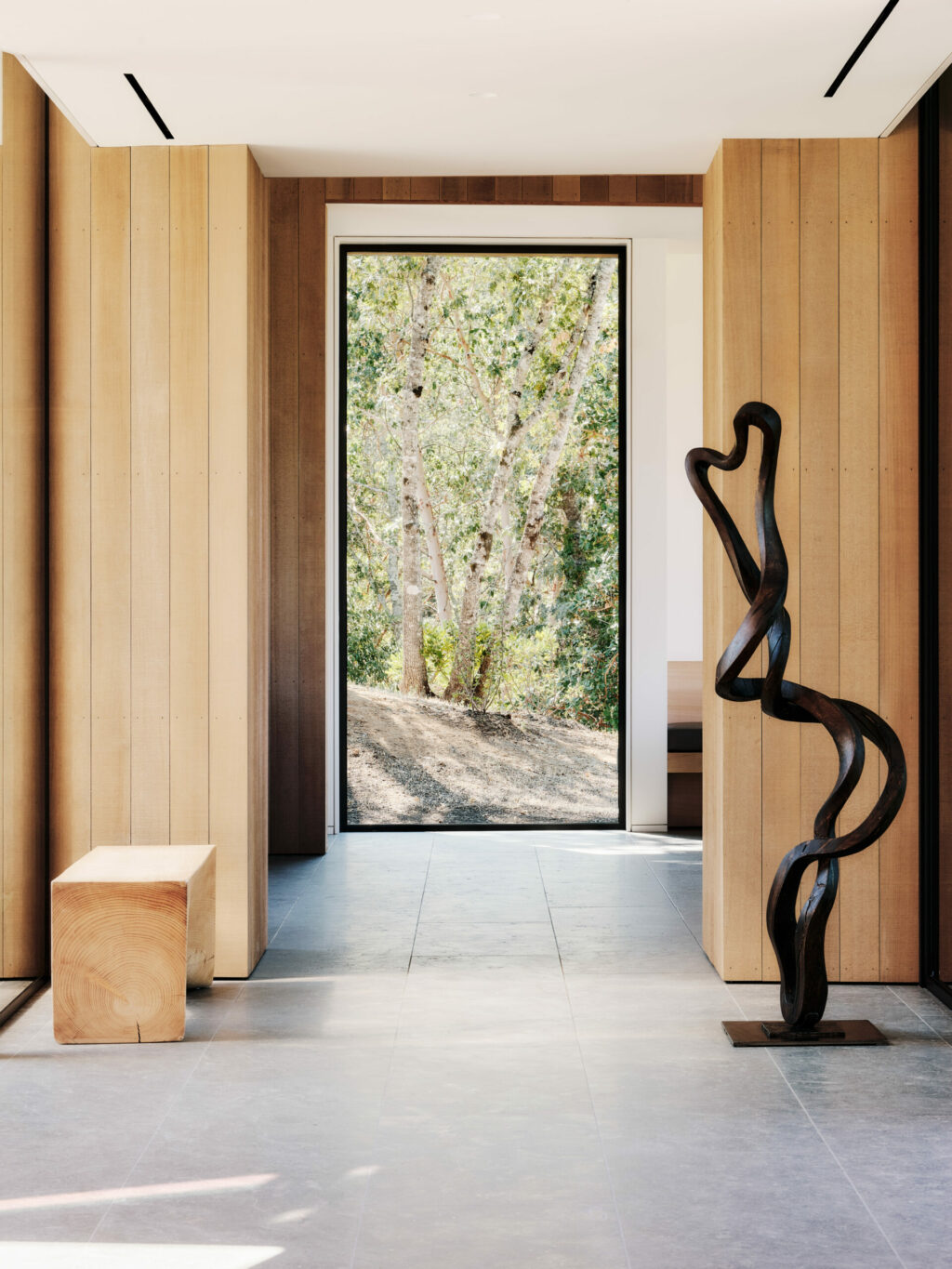
Field designed the copper-clad home so that it allows for taking in distant views of the valley and the surrounding landscape and more closeup views of the textures of mature oak and madrone trees, as well as the garden with its flowers and hummingbirds.
Much like an interior designer might mix different textures, colors and patterns to make a home stand out, Field uses natural elements to bring beauty inside — nature is both his muse and his medium. Click through the above gallery for a peek inside the Madrone Ridge home.




